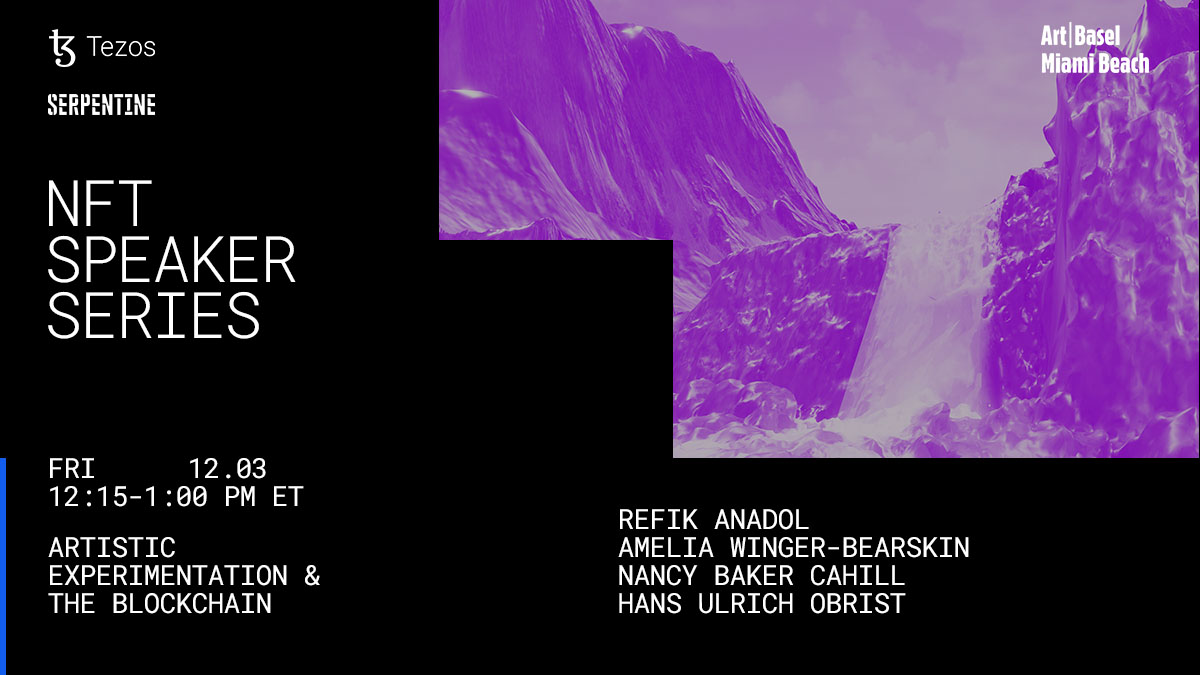IN
IN
JPN
EN
Join Our Communities

In his late 1960s book Understanding Media, Canadian media philosopher Marshall McLuhan wrote that art could anticipate future society and that art is an early alarm system pointing to new developments ahead. Art, he said, is a radar environment.
In a recent panel discussion at Art Basel Miami Beach, digital artists Refik Anadol, Amelia Winger-Bearskin, and Nancy Baker Cahill discussed how they use emerging technologies like blockchain for their artistic works and how the technology could potentially improve society.
According to Winger-Bearskin, chair and associate professor of AI and the arts at the Digital World Institute at the University of Florida, the blockchain’s main benefit is its decentralized nature.
“This technology can be the basis for reparations for different types of systems, and artists can prototype this future by creating simulations, creating environments, and creating these questions.”
Baker Cahill agreed and noted that her interest in blockchain, while focused on decentralization, is also informed by issues of accountability and transparency. “As someone who does work that’s very much engaged with social issues and living in a moment when we’re seeing such a lack of accountability, blockchain had a visceral appeal.”
“If we think about the way in which we have seen ownership of land or ownership of resources have always been based in corporate law, it’s not about one person, one vote,” said Winger-Bearskin. “The cool thing about blockchain is you can have one person, one vote, one penny from millions of people using that type of energy… as ways of protecting our environment, protecting and creating social justice and climate justice.”
The artists also discussed how blockchain could eliminate short-termism in human planning and better benefit the environment and people worldwide. Winger-Bearskin noted she views her work as a conversation with both her ancestors and future generations. When communicating with future generations, she needs to use abstractions, and artists are good at abstractions.
“We’re good at taking something and saying, okay, if this is a scatter plot of information, how do I connect it to as many decentralized stories as possible so that the future generations can learn?”
Artist Baker Cahill also commented that blockchain technology allows new ways of collaboration and that making art using blockchain technologies is collaboration. “I think the future is collaboration. I think we’re not going to get anywhere without collaboration,” she said. “I think what we’re seeing in the United States right now, the emphasis on the individual, the emphasis on the self, the emphasis on ego, has been the most destructive and toxic force and it’s why we have all these different variants and the toxic political system and discourse that we have now.”
“If we think hard about how blockchain could impact transparency of voting economics of finance, of campaign finance, if we could see if every transaction were transparent and we’re all there and all on the ledger, a lot would change, and it would change immediately,” Baker Cahill said.
Anadol concluded the discussion when he said blockchain is a technology that can find collective patterns and provide opportunities to unite rather than divide people.
“We are right now going through a pandemic at the same time without any background or culture by us. We are all equally damaged, and we need healing. My feeling is maybe it’s very urgently to use these technologies to find the problems and try to cure them collectively.”